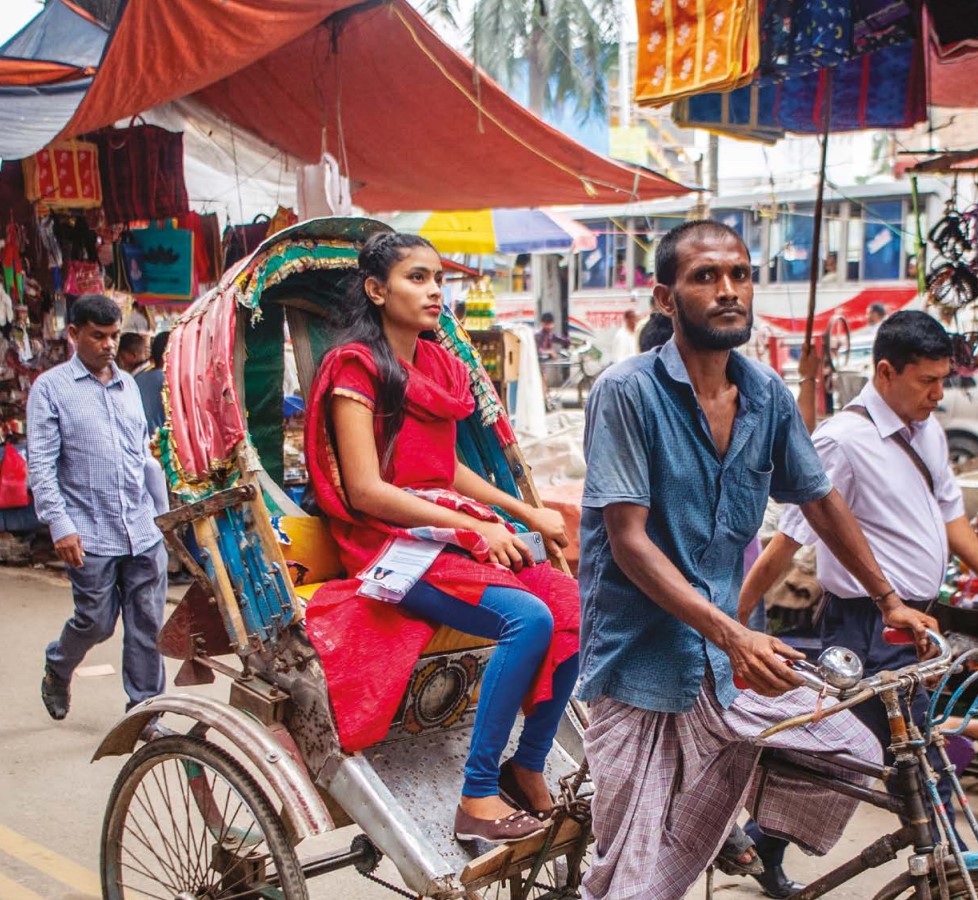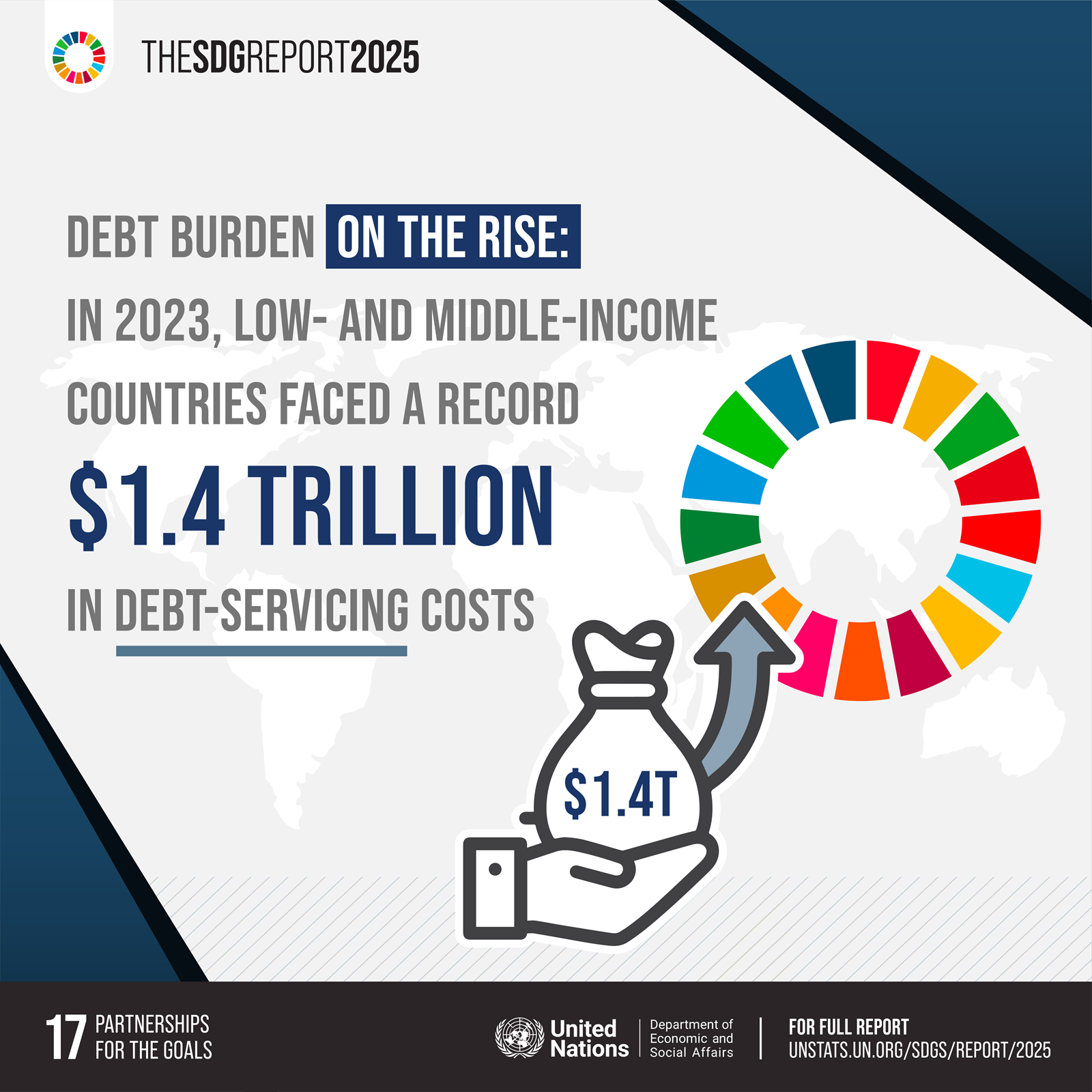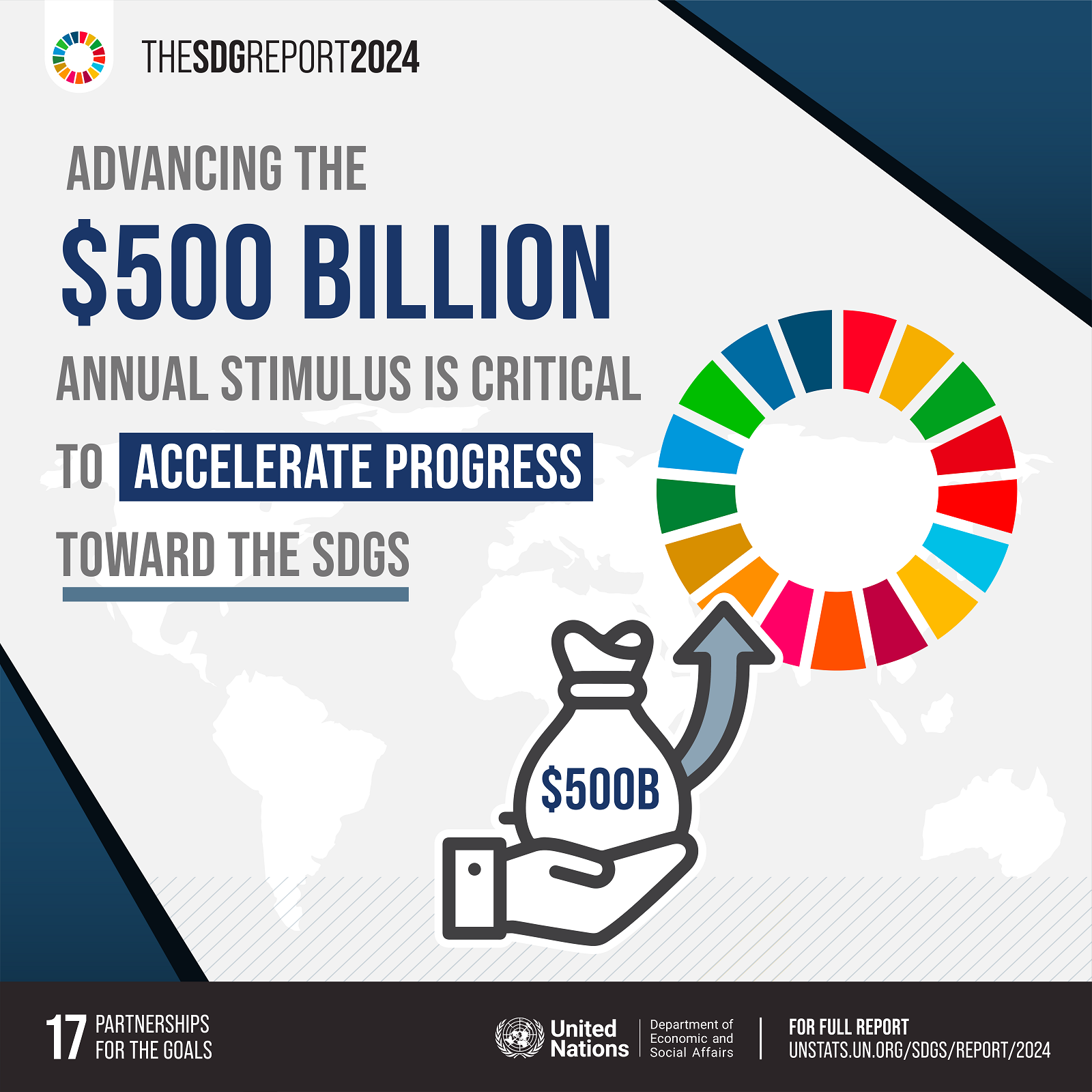
Capacity Development

Financial inclusion

Multi-stakeholder partnerships

Technology
Overview
Targets and Indicators

17.1
Strengthen domestic resource mobilization, including through international support to developing countries, to improve domestic capacity for tax and other revenue collection
17.1.1
17.1.2

17.2
Developed countries to implement fully their official development assistance commitments, including the commitment by many developed countries to achieve the target of 0.7 per cent of ODA/GNI to developing countries and 0.15 to 0.20 per cent of ODA/GNI to least developed countries; ODA providers are encouraged to consider setting a target to provide at least 0.20 per cent of ODA/GNI to least developed countries
17.2.1

17.3
Mobilize additional financial resources for developing countries from multiple sources
17.3.1
Additional financial resources mobilized for developing countries from multiple sources
17.3.2

17.4
Assist developing countries in attaining long-term debt sustainability through coordinated policies aimed at fostering debt financing, debt relief and debt restructuring, as appropriate, and address the external debt of highly indebted poor countries to reduce debt distress
17.4.1
Debt service as a proportion of exports of goods, services and primary income

17.5
Adopt and implement investment promotion regimes for least developed countries
17.5.1
Number of countries that adopt and implement investment promotion regimes for developing countries, including the least developed countries

17.6
Enhance North-South, South-South and triangular regional and international cooperation on and access to science, technology and innovation and enhance knowledge sharing on mutually agreed terms, including through improved coordination among existing mechanisms, in particular at the United Nations level, and through a global technology facilitation mechanism
17.6.1
Fixed broadband subscriptions per 100 inhabitants, by speed

17.7
Promote the development, transfer, dissemination and diffusion of environmentally sound technologies to developing countries on favourable terms, including on concessional and preferential terms, as mutually agreed
17.7.1
Total amount of funding for developing and developed countries to promote the development, transfer, dissemination and diffusion of environmentally sound technologies

17.8
Fully operationalize the technology bank and science, technology and innovation capacity-building mechanism for least developed countries by 2017 and enhance the use of enabling technology, in particular information and communications technology
17.8.1

17.9
Enhance international support for implementing effective and targeted capacity-building in developing countries to support national plans to implement all the Sustainable Development Goals, including through North-South, South-South and triangular cooperation
17.9.1
Dollar value of official development assistance committed to developing countries

17.10
Promote a universal, rules-based, open, non-discriminatory and equitable multilateral trading system under the World Trade Organization, including through the conclusion of negotiations under its Doha Development Agenda
17.10.1

17.11
Significantly increase the exports of developing countries, in particular with a view to doubling the least developed countries’ share of global exports by 2020
17.11.1
Developing countries’ and least developed countries’ share of global exports

17.12
Realize timely implementation of duty-free and quota-free market access on a lasting basis for all least developed countries, consistent with World Trade Organization decisions, including by ensuring that preferential rules of origin applicable to imports from least developed countries are transparent and simple, and contribute to facilitating market access
17.12.1
Weighted average tariffs faced by developing countries, least developed countries and small island developing States

17.13
Enhance global macroeconomic stability, including through policy coordination and policy coherence
17.13.1

17.14
Enhance policy coherence for sustainable development
17.14.1

17.15
Respect each country’s policy space and leadership to establish and implement policies for poverty eradication and sustainable development
17.15.1

17.16
Enhance the Global Partnership for Sustainable Development, complemented by multi-stakeholder partnerships that mobilize and share knowledge, expertise, technology and financial resources, to support the achievement of the Sustainable Development Goals in all countries, in particular developing countries
17.16.1
Number of countries reporting progress in multi-stakeholder development effectiveness monitoring frameworks that support the achievement of the Sustainable Development Goals

17.17
Encourage and promote effective public, public-private and civil society partnerships, building on the experience and resourcing strategies of partnerships
17.17.1
Amount in United States dollars committed to public-private partnerships for infrastructure

17.18
By 2020, enhance capacity-building support to developing countries, including for least developed countries and small island developing States, to increase significantly the availability of high-quality, timely and reliable data disaggregated by income, gender, age, race, ethnicity, migratory status, disability, geographic location and other characteristics relevant in national contexts
17.18.1
Statistical capacity indicators
17.18.2
17.18.3
Number of countries with a national statistical plan that is fully funded and under implementation, by source of funding

17.19
By 2030, build on existing initiatives to develop measurements of progress on sustainable development that complement gross domestic product, and support statistical capacity-building in developing countries
17.19.1
17.19.2
Proportion of countries that (a) have conducted at least one population and housing census in the last 10 years; and (b) have achieved 100 per cent birth registration and 80 per cent death registration
Progress and Info
Global progress on Goal 17 has shown both advancement and persistent challenges over the past decade. While financial flows to developing countries have increased, driven by both official and private finance, record-high debt servicing costs in 2023 strain low- and middle-income economies. This is compounded by a $4 trillion annual investment gap for Goal achievement in developing countries. Access to information and communications technology has grown steadily, although digital divides remain stark, in particular in lower-income regions. While data systems and national statistical capacities have improved, many countries still struggle to secure the necessary funding to fully track and implement the Goals, slowing progress in key areas. Strengthened support and renewed global cooperation are critical to bridge these divides and accelerate Goal progress. Through initiatives such as the Sustainable Development Goal stimulus, the Joint Sustainable Development Goals Fund, the Technology Facilitation Mechanism and the global indicator framework for the Sustainable Development Goals and targets of the 2030 Agenda for Sustainable Development, the United Nations is helping to build partnerships to close financing gaps, expand access to science, innovation and data, and support developing countries – alongside international financial institutions – in unlocking capital and investment for implementing the Goals and accelerating inclusive progress on the 2030 Agenda.
Finance
Target 17.1 - Data for 2023 from approximately 130 countries showed that, globally, government revenue accounted for approximately 33 per cent of GDP. The average overall tax burden or revenue in the form of taxes was 25 per cent of GDP among advanced economies and 18 per cent of GDP among emerging market and developing economies – both similar to 2015 levels. 149. As at 2023, government spending funded by taxes had stabilized regionally and converged globally. From 2015 to 2019, tax revenue rose from 65 to 66 per cent in advanced economies and from 60 to 61 per cent in emerging ones. After dropping to 52 per cent for both in 2020 owing to the pandemic, it rebounded to 62 per cent and 61 per cent, respectively, although it remained below pre-pandemic levels.
Target 17.2 - In 2024, ODA from countries that are members of the Development Assistance Committee of the Organisation for Economic Co-operation and Development declined by 7.1 per cent in real terms – the first drop in five years – reaching$212.1 billion (0.33 per cent of combined gross national income). The decrease was driven by lower contributions to international organizations, reduced aid for Ukraine and humanitarian support and less spending on hosting refugees. Nonetheless, total ODA remained 23 per cent higher than in 2019.
Target 17.3 - In 2023, financial resources for developing countries from multiple sources reported by 106 bilateral and multilateral providers amounted to $303 billion in official resources and $58.7 billion mobilized from private finance. An increase is observed for all forms of finance since 2019 (which amounted to $205.9 billion in official sources and $46.7 billion from private finance), with the largest increase (77 per cent) in concessional loans.
Global FDI reached an estimated $1.4 trillion in 2024, up 11 per cent from 2023, falling 8 per cent, however, when excluding financial flows through European conduit economies. The number of Goal-related investments declined 11 per cent in 2024. While there have been gains in renewable energy, health and education, three sectors – infrastructure, agrifood systems and water and sanitation – are now receiving less international financing than in 2015.
Global remittance flows were at $861 billion in 2023, an increase of 3 per cent from 2022. Remittance flows to low- and middle-income countries grew at a slower pace, at 1.4 per cent, to reach $647 billion, after sharp increases averaging approximately 10 per cent in the biennium 2021–2022. The true size of remittances, including flows through informal channels, however, is believed to be even larger.
Target 17.4 - In 2023, total debt servicing costs for all low- and middle-income countries reached a record high of $1.4 trillion, driven by rapidly accumulating external debt over the previous decade, interest rates at a two-decade high and currency depreciation. Principal repayments rose by 1 per cent to $950.9 billion, while interest payments increased by 37.1 per cent to $405.3 billion – both all-time highs. The total debt service to export earnings ratio rose by 1.6 points to 14.7 per cent.
Target 17.5 - In 2024, 51 countries had investment promotion mechanisms for outward FDI; 27 (compared with 23 in 2023) had schemes targeting developing countries, including the least developed countries.
Information and communications technology
Target 17.6 - Fixed-broadband subscriptions per 100 inhabitants grew at 6.3 per cent annually from 2015 to 2024, reaching 20 subscriptions per 100 inhabitants in 2024. However, coverage remains low in low-income countries owing to high prices and a lack of infrastructure.
Target 17.8 - Internet usage reached 68 per cent of the global population in 2024 (5.5 billion users), up from 65 per cent in 2023 and 40 per cent in 2015.Nonetheless, 2.6 billion people remain offline, and universal access is distant.
Target 17.11 158. In 2023, landlocked developing countries and the least developed countries accounted for just 1.1 per cent of global merchandise exports – a modest increase since 2015, but far below the target of doubling their share of global exports by 2020.
Data, monitoring and accountability
Target 17.18.1 - Sustainable Development Goal data collection has expanded since the pandemic. The average Open Data Inventory coverage scores increased sharply from 2022 to 2024 across all regions, surpassing 50 globally for the first time, with gains in economic and environmental data. Social and demographic data lag behind. However, even in developed countries, the average Open Data Inventory score is only 60 out of 100, highlighting the urgent need for increased investment in data infrastructure and production across all countries.
Statistical performance scores rose from 58.6 in 2016 to 69.7 in 2023, with marked improvements over the COVID-19 period owing to the heightened demand for reliable data.
In 2024, 159 countries and territories reported having national statistical legislation in compliance with the Fundamental Principles of Official Statistics, an increase from 132 countries in 2019.
In 2024, 137 countries reported implementing a national statistical plan, 95 fully funded – mainly through government sources (103 countries), followed by donor funding (35 countries) and other sources (10 countries). However, many countries face challenges in securing sustainable financing for statistical development plans, limiting their ability to address evolving data needs.
Target 17.19 - In 2022, $875 million was disbursed to strengthen statistical capacity in developing countries, up 2 per cent from 2021, yet a nearly 50 per cent increase since 2015. New donors, including private foundations and non-Development Assistance Committee members, are increasing their role.

For more information, please visit: https://unstats.un.org/sdgs/report/2025/
More details on SDG 17 in 2025: https://unstats.un.org/sdgs/report/2025/Goal-17/
The 2025 Extended Report on SDG 17 can be found here: https://unstats.un.org/sdgs/report/2025/extended-report/Extended-Report-2025_Goal-17.pdf













